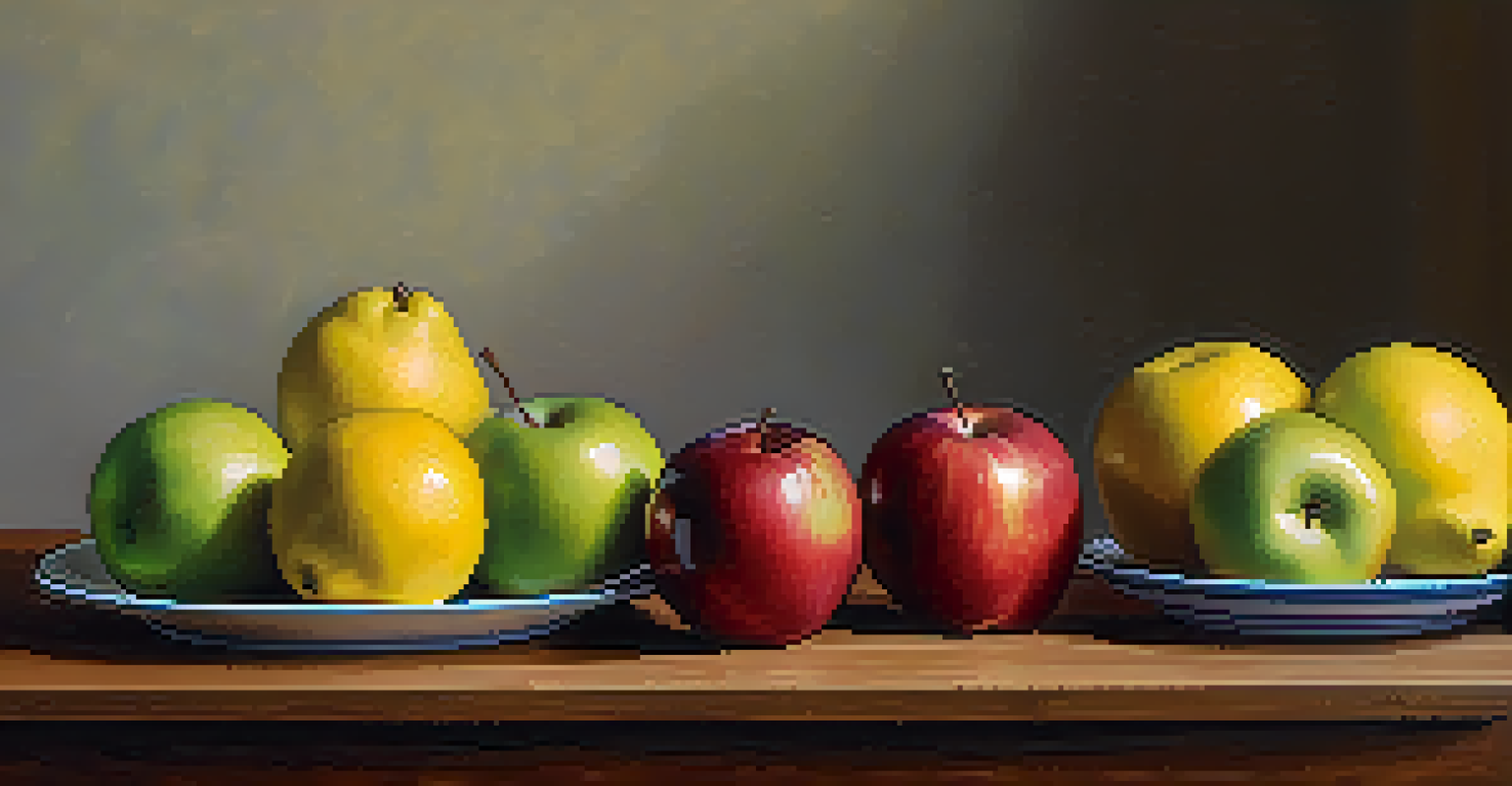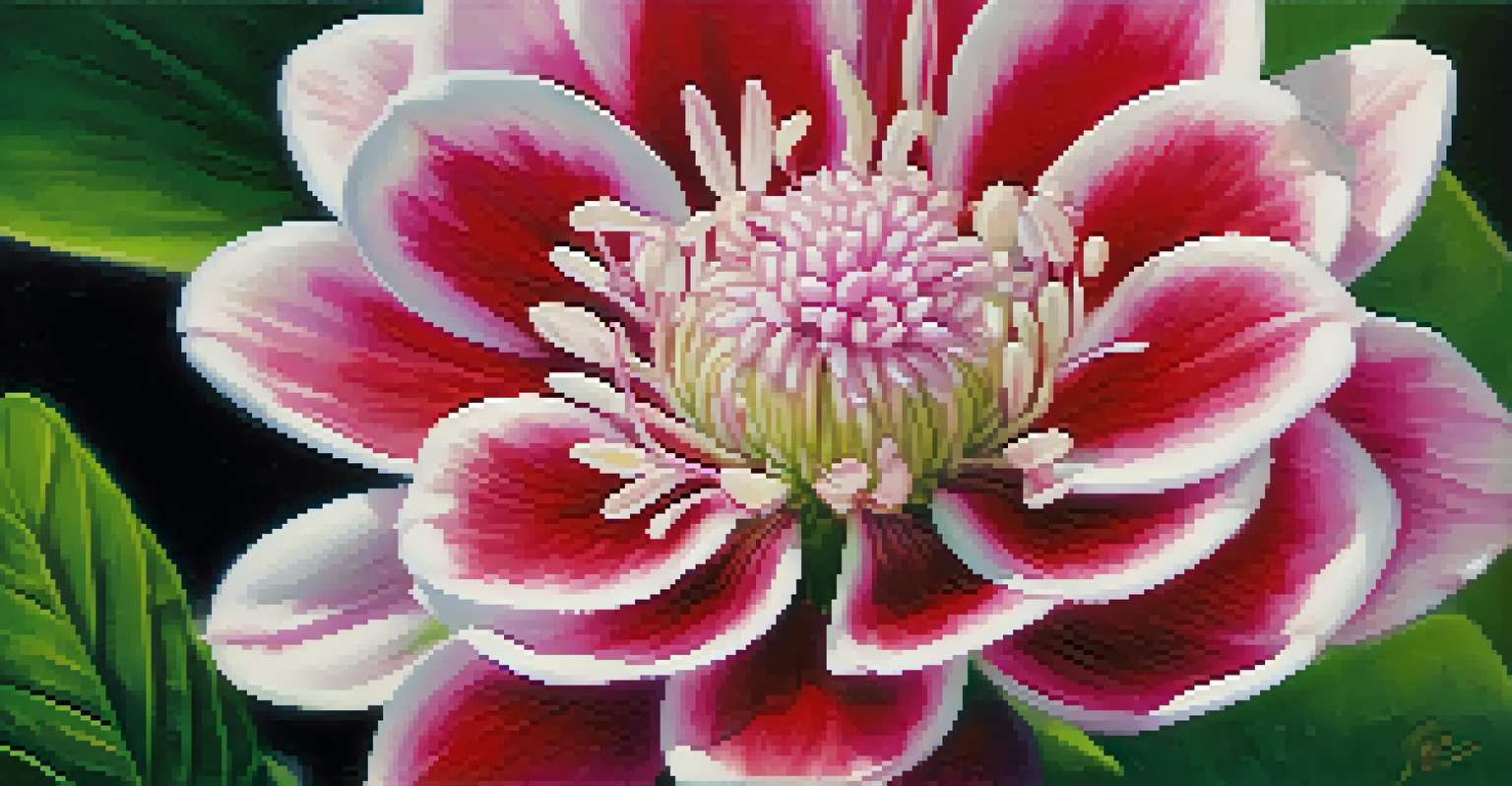Understanding the Basics of Composition in Fine Art Painting

What is Composition in Fine Art Painting?
Composition in fine art painting refers to the arrangement of elements within a work to create a unified whole. It's like a blueprint for your artwork, guiding the viewer's eyes to important parts while maintaining balance. Good composition helps convey the artist's message or emotion effectively, making it an essential skill for any painter.
Composition is the art of arranging in a way that will be effective.
Think of composition as the backbone of your painting—it supports everything else. Just as a well-structured story captivates readers, a well-composed painting draws viewers in. Whether you're working with landscapes, portraits, or abstract art, understanding composition can elevate your work to new heights.
Ultimately, composition is about making choices. From the placement of objects to the use of space, each decision shapes how the viewer perceives your art. By mastering the basics of composition, you'll be better equipped to express your creative vision.
The Rule of Thirds: A Fundamental Guideline
One of the most popular composition techniques is the rule of thirds. Imagine dividing your canvas into nine equal parts with two horizontal and two vertical lines. Placing focal points along these lines or at their intersections can create a more balanced and engaging composition.

This rule mirrors how our eyes naturally gravitate towards certain areas of a scene. For instance, if you're painting a landscape, positioning the horizon along one of the horizontal lines rather than in the center can add depth and interest. It's a simple yet powerful way to guide the viewer's gaze.
Mastering Composition is Key
Understanding composition is essential for creating a unified and impactful painting that effectively conveys the artist's message.
While the rule of thirds is a helpful starting point, it's important to remember that rules are meant to be broken. As you gain confidence in your artistic voice, feel free to experiment with different setups. Sometimes, the most striking compositions come from breaking away from traditional guidelines.
Creating Balance: Symmetry vs. Asymmetry
Balance in composition refers to the distribution of visual weight in a painting. There are two main types: symmetry and asymmetry. Symmetrical compositions mirror elements on either side of a central axis, creating a sense of order and stability. Think of a perfectly balanced scale—it feels harmonious and pleasing to the eye.
The whole is greater than the sum of its parts.
On the other hand, asymmetrical compositions achieve balance through unequal distribution. This might sound chaotic, but it can evoke a dynamic energy that draws the viewer in. For example, placing a large object on one side and a smaller one on the opposite side can create a sense of equilibrium that feels exciting.
Understanding both types of balance allows you to choose the right one for your artwork. Depending on the mood you want to convey, you might opt for symmetrical calmness or asymmetrical vibrancy. Experimenting with both can lead to captivating results.
Using Lines to Direct the Viewer’s Eye
Lines are powerful tools in composition, guiding the viewer's eyes through the painting. They can be straight, curved, thick, or thin, and each type can evoke different feelings. For instance, straight lines often convey order and structure, while curved lines suggest movement and softness.
Consider how roads in a landscape painting can lead the viewer's gaze towards a distant mountain. These guiding lines create a journey for the eyes to follow. Additionally, using leading lines can emphasize the focal point, drawing attention to what you want the viewer to notice most.
Balance Enhances Visual Appeal
Using symmetry or asymmetry in composition helps distribute visual weight, influencing the emotional response of the viewer.
Incorporating lines into your compositions can add depth and perspective. By thinking about how lines interact with other elements, you can create a more engaging and dynamic painting that keeps the viewer's interest alive.
The Importance of Color and Contrast
Color plays a vital role in composition, influencing mood, focus, and the overall impact of your painting. The combination of colors can either harmonize or create tension, depending on how they're used. For instance, warm colors like red and orange can evoke feelings of excitement, while cool colors like blue and green promote tranquility.
Contrast is another essential element, helping to highlight differences between colors, shapes, and textures. High contrast can draw attention to specific areas, while low contrast can create a sense of calm. For example, placing a bright yellow flower against a dark green background not only makes the flower pop but also invites the viewer to explore the surrounding area.
By thoughtfully selecting your color palette and considering contrast, you can enhance the emotional resonance of your artwork. This careful consideration can transform a simple composition into a vibrant expression of your artistic vision.
Space: The Silent Partner in Composition
Space, or negative space, refers to the area around and between subjects in your painting. It might seem insignificant, but it plays a crucial role in composition. By deliberately using space, you can emphasize your focal point and create a sense of balance.
Imagine a painting filled with vibrant colors but no breathing room; it can feel overwhelming. In contrast, incorporating ample negative space allows the viewer's eye to rest, enhancing the overall experience. Think of it like the pauses in music—they create rhythm and highlight what’s important.
Focal Points Direct Viewer Attention
Strategically placing focal points in your artwork guides the viewer's focus and enhances the narrative or emotion conveyed.
Experimenting with space can lead to intriguing results. By varying the amount of space around your subjects, you can change the painting's mood and message, making it a powerful tool in your artistic toolkit.
The Role of Focal Points in Your Artwork
A focal point is the area of a painting that draws the viewer's attention first. It's often the most important element of your composition, guiding the viewer's understanding of the piece. By strategically placing your focal point, you can tell a story or convey an emotion effectively.
Think of a portrait: the subject's face is typically the focal point, with other elements supporting it. This hierarchy helps the viewer connect with the emotion and narrative of the artwork. Various techniques, such as contrast, color, and positioning, can enhance your focal point's impact.

While it's essential to have a focal point, consider how other elements play off it. The surrounding details can either enhance or distract from the main subject. Balancing these elements thoughtfully can lead to a captivating and cohesive composition.